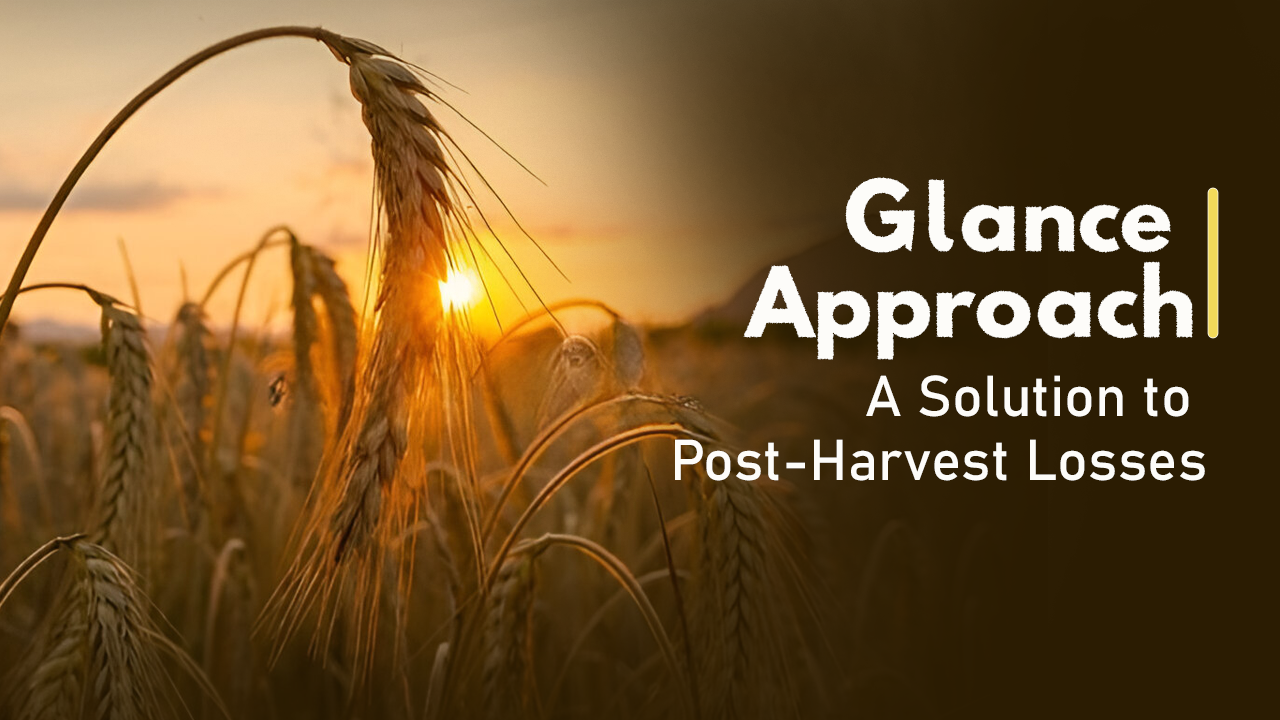
What are post-harvest losses and why do post-harvest losses occur in agriculture?
Reduction in both quantity and quality of food products during the period between harvest and final consumption are due to Post- harvest losses and the final quality degradation includes Compromised edibility, Diminished product acceptability and Compromised edibility.
India, a top global producer of fruits and vegetables, faces substantial post-harvest losses i.e., 30-40% of produce is lost between harvest and consumption. These losses stem result due to various factors such as poor infrastructure, inefficient transportation, and gaps in post-harvest knowledge and technology and deep freezer vans for handling perishable goods so that cool chain and low temperature while transporting perishable commodities such as fruits, vegetable, pulses and cereals can be maintained.
Key factors contributing to post-harvest losses
Transportation network
Poor market connectivity
Poor infrastructure
Inaccessibility of deep freezer vans for handling perishable
Current scenario of Post-harvest losses worldwide
Globally 13.2 percent is food loss from harvest up to retail and 17 percent is food waste at the retail and consumer levels.
In China, the loss percentage for cereals is at 2.22 % compared to India’s figure of 4.44 %
Every year, an estimated 1.3 billion ton roughly one third of the food produced for the human consumption worldwide is lost or wasted. In developing countries, food losses takes place during the early and middle stage of the supply chain
India's post-harvest losses amount to approximately ₹89,375 crore annually, according to a 2020 Ministry of Food Processing Industries (MOFPI) report.
According to the Indian Council of Agricultural Research (ICAR), between
4% and 18% of fruits, vegetable, pulses and cereals crops perish after harvesting
India's annual post-harvest losses are estimated at ₹1,52,790 crore,
according to a 2022 Ministry of Food Processing Industries report.
The largest losses are in perishable commodities, including livestock products like eggs, fish, and meat.
Impacts of Post-Harvest Losses
Farmers’ Income Squeeze
Nutrient Deficit due to less nutritional food
Unpredictable Price Swings
Water & Energy Waste and agricultural land Misuse
Sustainability Setback by hindering the progress toward sustaining of zero hunger and climate action
Government initiative to minimize Post-harvest losses
Doubling Farmer's Income (DFI),
Agriculture Infrastructure Fund (AIF),
Pradhan Mantri Kisan Sampada Yojana (PMKSY)
These are focused on enhancing the production, transportation, and distribution of food
Indian Railways has boosted agricultural logistics by introducing refrigerated wagons and partnering with the private sector, enhancing the transport of perishable goods, especially during the COVID-19 pandemic.
In August 2020 Kisan Rail program was launched to support the small and marginal farmers
These initiatives has not only increased farmers' incomes but also result in minimized spoilage. Enhancing Railway services in agricultural logistics is essential for supporting farmers, stabilizing food prices, and reducing environmental impact through decreased food waste.
Effective Approaches to Mitigate Post-Harvest Losses
Improved Infrastructure Development: Cold Storage Facilities, refrigerated Transportation and packaging Innovation to increase its shelf life during transportation
Price stabilization and direct selling mechanism: Promoting online platform so that farmer can directly contact the consumer
Technological Innovation: Deploy IoT (Implement internet of things) technologies and traceability systems to enhance produce monitoring and ensure quality control. Leverage data analytics for accurate demand forecasting and optimized supply chain management.
Invest in scientific research: Tailored to Indian conditions for post-harvest management and establish platforms for sharing knowledge, best practices, and success stories among stakeholders.
Refrences
1. Shweta lamba and Nitya sharma “The Hindu”newspaper 18 July,2024
2.. Singh Taniya, Bansal, Surbhi & Kaur, Lavleen. (2022). Factors Affecting Post-Harvest Losses in Tomato Crop in Amritsar District of Punjab.
3. Ranjan, Juhi & Sahni, Ramesh. (2023). Post harvest losses of fruits and vegetables in India.
Categories
Recent posts


NABARD Grade A Exam
3 Jul 2024
IBPS AFO Exam 2024-25
3 Jul 2024
Syllabus
3 Jul 2024



